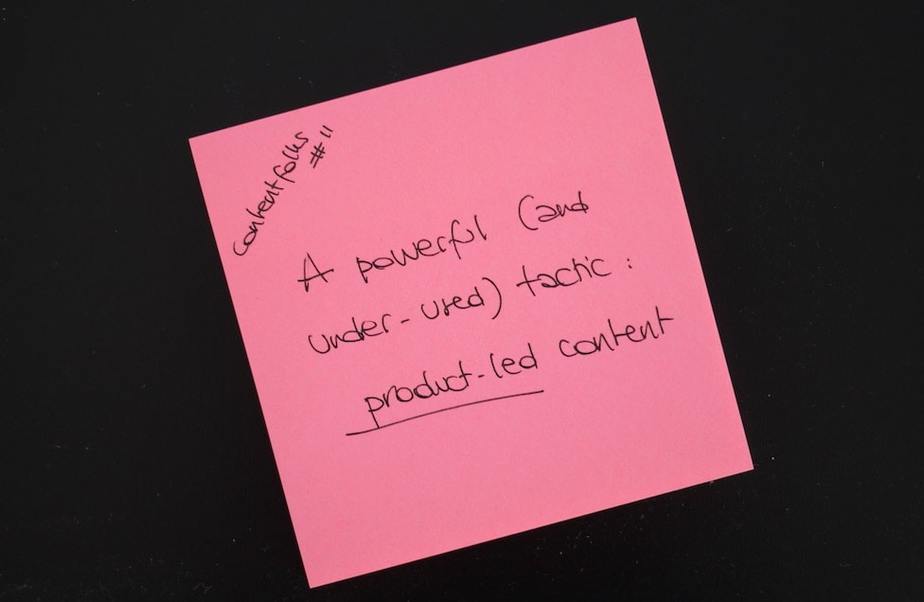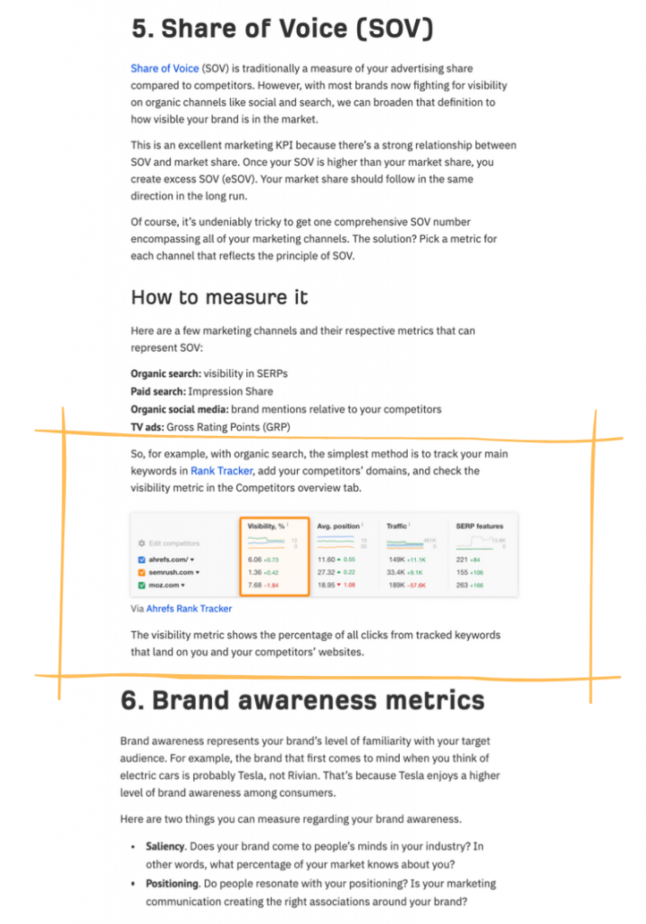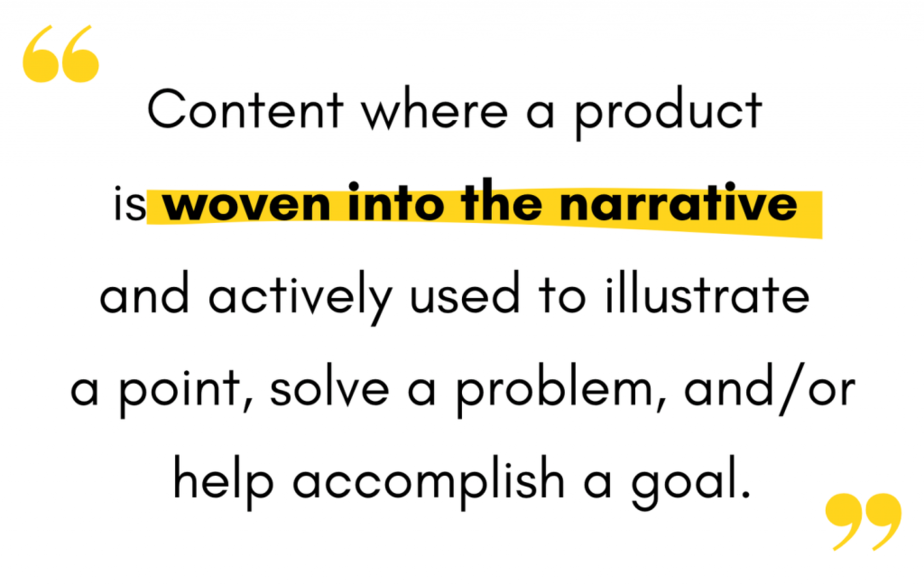
Welcome to contentfolks—a fortnightly newsletter with short*** lessons & ideas about content that makes a difference, sparks action, and truly serves its audience. Thank you for being here!
***except for this week, where this is longer than usual because I had a lot of things to say.
Hey 👋
If you work in SaaS or B2B, you probably heard that your content needs to be ‘edgy’ or ‘innovative’, so let me preemptively declare that today’s topic qualifies as… neither 😉
But!, if you want your content to have consistent and demonstrable impact, you may want to consider a tactic that drove a lot of my success at Hotjar: product-led content.
I have two ways for you to learn about the topic:
- Read the content below, which gives you a quick overview, and/or
- Check out this product-led content overview page, where I collect all the presentations/slide decks/ etc. I’ve given on the topic.
What is product-led content?
Let’s start from two examples so we’re on the same page.
Example #1 → halfway through Ahrefs’ guide to 7 marketing KPIs worth tracking, there is a small showcase of one of Ahrefs’ tools. Right after a paragraph that introduces KPI #5 and its business relevance, you get an annotated screenshot from inside the product dashboard + a quick write-up that explains how the tool can be used in this context:

Example #2 → in this Hotjar introduction to open-ended questions, there’s a practical demonstration of how to use one of Hotjar’s tools to run a survey, with a dashboard screenshot that highlights a useful product feature:

Both are good examples of what I call product-led content: pieces where the product is woven into the narrative and actively used to illustrate a point, solve a problem, and/or help the audience accomplish a goal.

To be clear, we’re not talking about landing pages, tutorials like “How to do X using [product],” help docs, or case studies. These are product-led formats by default 😉
We’re talking about blog posts and guides that cover concepts or pain points relevant to a customer while also folding in screenshots, advice, and information about the product. The idea is to answer the reader’s initial question (e.g. which metrics are worth tracking, how do open-ended questions work) and inform them at the same time that your product can help—without breaking the flow or inserting a hard pitch.
Why isn’t everybody doing it?
Based on the Hotjar and Ahrefs examples above, product-led content seems the most obvious thing in the world—yet it’s not done nearly as often as it should be.
What’s going on?
The reason I think this is such an under-utilised tactic is that it requires solid effort and possibly a re-thinking of what successful content marketing looks like. You have to comfortably wear the multiple hats of content strategist, product marketer, and customer success manager while at the same time thinking like a CEO. Meaning:
- You have to be relentlessly customer-centric → run customer interviews, listen in on sales or support calls, collect feedback, dig through survey data, and keep updating your understanding of what potential and actual customers need
- You need to r-e-a-l-l-y know your product → not in a generic ‘our product does this thing’ way, but in an ‘I’ve seen, used, recommended, and/or helped people with this feature’ way, so you know how something works, where to talk about it, and how
- You have to let go of traffic or number of pieces published as your success metric, and start thinking about business impact*** instead
It’s a lot of stuff. Not everybody wants to deal with it.
*
On the flipside, those who do get an incredible competitive advantage:
- This content helps with acquisition → potential customers can see the product in action and get to know it long before they decide to commit to it
- This content helps with retention → existing customers can keep discovering new ways of using the product and get the most out of it
***thinking about business impact
I credit this slide from Ahrefs’ 2017 Blogging for Business lesson with giving me a major ‘a-ha’ content moment and helping me define what product-led content would look like.
This here is a Business Potential Score:

How it works → when thinking about a content topic, give it a score from 0 (makes no sense to mention my product) to 3 (my product is crucial to getting this job done).
If you want your content to be product-led and have true business impact, gravitate towards topics with a score of 2 or 3—even if traffic potential is not that impressive.
Showcasing the product > attracting masses of untargeted traffic.
How we used it → in addition to looking at traffic potential, our 2-person team started grading topics for what I called ‘Hotjarability’, aka: how easy it would be to weave Hotjar into the story. For every proposed piece, I’d ask questions like “How ‘Hotjarable’ is this?” and “When/where/how do we showcase Hotjar within the narrative?”
💡 A practical example 💡
In 2018, we published a guide to user personas and how to create them that is still one of my favourite examples of product-led content.

We wrote this guide on the back of three insights:
- Creating user personas can be a complex and and costly process—but we knew it didn’t have to be. That’s because…
- During a routine customer interview, a Hotjar user had walked us through the steps they had taken to create basic personas with Hotjar, which meant…
- This topic was both relevant to our customers and had a Hotjarability score of at least 2 🔥 🔥
So we wrote a piece that was:
- Optimised for organic search
- Based on a customer success story
- About a common job to be done
- Focused on showcasing Hotjar’s role in the larger narrative
We even included a step-by-step tutorial so people could see for themselves how easy the process could be:

Here is how the story ends:
This 2.5-year-old piece still (Mar 2021) wins the snippet when you look for user personas and drives targeted traffic back to Hotjar:

But more importantly, throughout the rest of my tenure, this piece was consistently one of the top-ten drivers of signups and marketing qualified leads (MQLs). And because it was directly connected to a typical customer pain point, I am confident it was useful for retention and upsells as well.
So this is how our team embraced a product-led approach that helped us have a true impact on business growth.
But it’s worth telling you that this approach can also be retroactively applied to existing pieces. That’s perhaps the easiest way for you to start: grade existing content with the 0-3 business potential score and see if you can integrate your product into the narrative. I guarantee there are opportunities everywhere!
